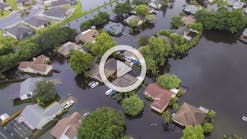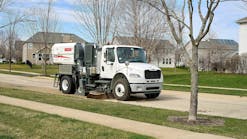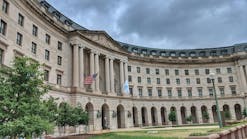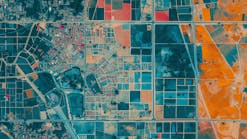
Most of us know the value of trees in an urban setting, not least for their role in managing stormwater. They have air- and water-quality benefits, they help reduce the heat island effect, and, when there are enough of them, the tree canopy can help capture enough rainfall to reduce peak flows. And, significantly, they can increase property values; people enjoy trees.
Now one city is putting a price—literally—on urban trees. In Phoenix, AZ, under the direction of the city’s forestry supervisor, 1-foot-by-2-foot orange plastic tags are appearing on public trees around the city. The handwritten tags show, on one side, what type of tree it is and some of its benefits, such as the amount of carbon it removes from the air; on the other side is the tree’s annual dollar value to the community. Many cities have similar programs in place. The goal in Phoenix is to tag a couple hundred trees in highly visible areas.
The tags are an attempt to help people understand the benefit of trees in a tangible way. Phoenix has about 3.2 million trees (93,000 of them in public spaces); tree canopy currently covers about 9 to 12% of the city’s 520 square miles. The city is trying to increase that to 25% over the next 15 years. Studies by the city, the University of Arizona, and Arizona State University show that achieving 25% coverage could reduce near-ground temperatures by more than 4 degrees—a significant benefit in a city where average summer high temperatures run to three digits.
According to Project Desert Canopy, a study funded by the US Forest Service to quantify the value of trees in four Southwest cities—Phoenix; Albuquerque and Las Cruces, NM; and El Paso, TX—Phoenix’s tree canopy removes 1,770 tons of air pollution annually, removes enough carbon to offset 10,412 cars, and reduces stormwater runoff by 91.7 million cubic feet. Kathleen Ferris, executive director of the Arizona Municipal Water Users Association, provides more details about Phoenix’s program in her blog.
Of course, in many cities trees are also viewed as a nuisance—more trees mean more leaves to clog gutters and storm drains, and the roots of well-established trees can wreak havoc with sidewalks and underground pipes. Which way does your community tend to view them? Would a campaign like Phoenix’s help to make trees more appreciated?
Janice Kaspersen
Janice Kaspersen is the former editor of Erosion Control and Stormwater magazines.





